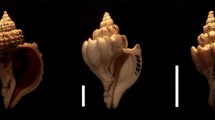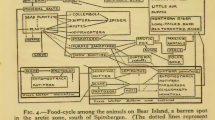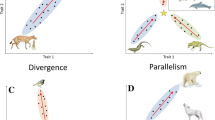Abstract—The evolutionary-ecological concept of morphoniche is proposed where the morphoniche is regarded as part of the multidimensional ecological niche that characterizes the limits of phenotypic plasticity of individuals, cenopopulations, and taxocenes in the morphospace. The phenome—a morphofunctional “shell” of an individual—is the basic part of its ecological niche and a multifunctional “biological tool” allowing the individual to perform its generative, trophic, and environment-forming functions in the population and community. The phenome characterizes the morphophysiological habitus of an individual and serves as its personal morphoniche. Geometric morphometrics makes it possible to bring into correlation the locations of individual morphoniches in the common morphospace and evaluate coupled morphogenetic reactions of individuals to changes in aut- and synecological factors. The epigenetic system of a population parameterizes the potential morphospace, delimiting the fan of possible invariants of morphogenesis. The volume of population morphospace reflects morphogenetic reactions of a population to the range of local ecological factors and allows estimation of its realized morphoniche. An analysis of realized morphoniches over many years provides an estimate of the potential population morphoniche. Part of the community (taxocene) comprising cenopopulations of closely related sympatric species provides a model of the cenotic morphoniche. The ratios between the volumes of realized and potential morphoniches make it possible to evaluate the adaptive modification potential and optimality index of the realized morphoniches of individuals, cenopopulations, and taxocenes, the limits of their phenotypic plasticity, and the risk of an evolutionary-ecological crisis.



Similar content being viewed by others
REFERENCES
Read, A.F. and Clark, J.S., The next 20 years of ecology and evolution, Trends Ecol. Evol., 2006, vol. 21, no. 7, pp. 354–355.
Sutherland, W.J., Freckleton, R.P., Goodfray, H.Ch.J., et al., Identification of 100 fundamental ecological questions, Ecology, 2013, vol. 101, pp. 58–67.
Zherikhin, V.V., Izbrannye trudy po paleoekologii i filotsenogenetike (Selected Works in Paleoecology and Phylocenogenetics), Moscow: KMK, 2003.
Parmesan, C., Ecological and evolutionary responses to recent climate change, Annu. Rev. Ecol. Evol. Syst., 2006, vol. 37, pp. 637–669.
Palkovacs, E.P. and Hendry, A.P., Eco-evolutionary dynamics: Intertwining ecological and evolutionary processes in contemporary time, F1000 Biol. Rep., 2010, vol. 2, no. 1, pp. 1–5. https://doi.org/10.3410/B2-1
Pigliucci, M., Do we need an extended evolutionary synthesis?, Evolution, 2007, vol. 61, no. 2, pp. 2743–2749.
Dickins, T.E. and Rahman, Q., The extended evolutionary synthesis and the role of soft inheritance in evolution, Proc. R. Soc. Lond. B, 2012, vol. 279, pp. 2913–2921.
Laland, K.N., Uller, T., Feldman, M.W., et al., The extended evolutionary synthesis: Its structure, assumptions and predictions, Philos. Trans. R. Soc. B, 2015, vol. 282, pp. 1–14. https://doi.org/10.1098/rspb.2015.10
Jablonka, E. and Raz, G., Transgenerational epigenetic inheritance: Prevalence, mechanisms, and implications for the study of heredity and evolution, Q. Rev. Biol., 2009, vol. 84, pp. 131–176.
Duncan, E.J., Gluckman, P.D., and Dearden, P.K., Epigenetics, plasticity and evolution: How do we link epigenetic change to phenotype?, J. Exp. Zool. B: Mol. Dev. Evol., 2014, vol. 322, pp. 208–220.
Laland, K., Matthews, B., and Feldman, M.W., An introduction to niche construction theory, Evol. Ecol., 2016, vol. 30, pp. 191–202.
Burggren, W., Epigenetic inheritance and its role in evolutionary biology: Re-evaluation and new perspectives, Biology, 2016, vol. 5, no. 24, pp. 2–22.
West-Eberhard, M.J., Developmental Plasticity and Evolution, Oxford: Oxford Univ. Press, 2003.
Violle, C., Enquist, B.J., McGill, B.J., et al., The return of the variance: Intraspecific variability in community ecology, Trends Ecol. Evol., 2012, vol. 27, no. 4, pp. 244–252.
Rohlf, F.J. and Slice, D., Extensions of the Procrustes method for the optimal superimposition of landmarks, Syst. Biol., 1990, vol. 39, pp. 40–59.
Pavlinov, I.Ya. and Mikeshina, N.G., Principles and methods of geometric morphometrics, Zh. Obshch. Biol., 2002, vol. 63, no. 6, pp. 473–493.
Zelditch, M.L., Swiderski, D.L., Sheets, H.D., and Fink, W.L., Geometric Morphometrics for Biologists: A Primer, New York: Elsevier, 2004.
Klingenberg, C.P., MorphoJ: An integrated software package for geometric morphometrics, Mol. Ecol. Resour., 2011, vol. 11, pp. 353–357.
Sheets, H.D. and Zelditch, M.L., Studying ontogenetic trajectories using resampling methods and landmark data, Hystrix, 2013, vol. 24, no. 1, pp. 67–73.
Vasil'ev, A.G., Vasil’eva, I.A., and Shkurikhin, A.O., Geometricheskaya morfometriya: ot teorii k praktike (Geometric Morphometrics: From Theory to Practice), Moscow: KMK, 2018.
Grinnell, J., Field tests of theories concerning distributional control, Am. Nat., 1917, vol. 51, pp. 115–128.
Elton, Ch., Animal Ecology, London: Sidwick & Jackson, 1927.
Hutchinson, G.E., Concluding remarks, Cold Spring Harbor Symp. Quant. Biol., 1957, vol. 22, pp. 415–427.
Hutchinson, G.E., The niche: An abstractly inhabited hyper-volume, in The Ecological Theater and the Evolutionary Play, New Haven, 1965, pp. 26–78.
Pianka, E.R., Evolutionary Ecology, New York: Harper and Row, 1978. Translated under the title Evolyutsionnaya ekologiya, Moscow, Mir, 1981.
Odum, E.P., Basic Ecology, Philadelphia: Saunders, 1983. Translated under the title Ekologiya, Moscow: Mir, 1986.
Levchenko, V.F., Modeli v teorii biologicheskoi evolyutsii (Models in the Theory of Biological Evolution), St. Petersburg: Nauka, 1993.
Ozerskii, P.V., Hutchinson’s ecological niche concept: Duality and the way to eliminate it, in Funktsional’naya morfologiya, ekologiya i zhiznennye tsikly zhivotnykh: Nauchnye trudy kafedry zoologii (Animal Functional Morphology, Ecology, and Life Cycles: Scientific Papers of the Department of Zoology), St. Petersburg: TESSA, 2006, vol. 5, pp. 137–146.
Günther, K., Über Evolutionfaktoren und die Bedeutung des egriffs “ökologische Lizenz” für die Erklärung von Formenerscheinungen in Tierreichs, in Ornithologie als biologische Wissenschafl. 28 Beiträgeals Festschrifl zum 60 Geburtstag von Erwin Stresemann (22 November, 1949), Heidelberg: C. Winter-Universitätsverlag, 1949, pp. 23–54.
Starobogatov, Ya I. and Levchenko, V.F., An ecocentric concept of macroevolution, Zh. Obshch. Biol., 1993, vol. 54, no. 4, pp. 389–407.
Peterson, A.T., Soberon, L., Pearson, R.G., et al., Ecological Niches and Geographic Distributions, Levin, S.A. and Horn, H.S., Eds., Princeton, NJ: Princeton Univ. Press, 2011.
Gause, G.F., The Struggle for Existence, New York, 1934.
Park, T., Experimental studies of interspecies competition: 2. Temperature, humidity, and competition in two species of Tribolium, Physiol. Zool., 1954, vol. 27, no. 3, pp. 177–238.
Van Valen, L., Morphological variation and width of ecological niche, Am. Nat., 1965, vol. 99, pp. 377–390.
Bolnick, D., Ingram, T., Stutz, W.E., et al., Ecological release from interspecific competition leads to decoupled changes in population and individual niche width, Proc. R. Soc. Lond. B, 2010, vol. 277, pp. 1789–1797.
Levins, R., The limiting similarity, convergence, and divergence of coexisting species, Am. Nat., 1967, vol. 101, no. 921, pp. 377–385.
Mouillot, D., Dumay, O., and Tomasini, J.A., Limiting similarity, niche filtering and functional diversity in costal lagoon fish communities, Estuar. Coast. Shelf Sci., 2007, vol. 71, pp. 443–456.
Cornwell, W.K., Schwilk, D.W., and Ackerly, D.D., A trait-based test for habitat filtering: Convex hull volume, Ecology, 2006, vol. 87, no. 6, pp. 1465–1471.
Diamond, J.M., Assembly of species communities, in Ecology and Evolution of Communities, Cody, M.L. and Diamond, J.M., Eds., Cambridge, MA: Belknap Press, 1975.
Diamond, J.M. and May, R.M., Island biogeography and the design of natural reserves, in Theoretical Ecology: Principles and Applications, May, R.M., Ed., Oxford, UK: Blackwell, 1981, pp. 228–252
Simberloff, D.S., Colonization of islands by insects: Immigration, extinction, and diversity, in Diversity of Insect Faunas: Symposium of the Royal Entomological Society, London, Mound, L.A. and Waloff, N., Eds. London: Royal Entomological Society, 1978, no. 9, pp. 139–153.
Connor, E.F. and Simberloff, D., The assembly of species communities: Chance or competition?, Ecology, 1979, vol. 60, pp. 1132–1140.
Simberloff, D. and Boecklen, W., Santa Rosalia reconsidered: Size ratios and competition, Evolution, 1981, vol. 35, pp. 1206–1228.
Schoener, T.W., Field experiments on interspecific competition, Am. Nat., 1983, vol. 122, pp. 240–285.
Ricklefs, R. and Travis, J., A morphological approach to the study of avian community organization, Auk, 1980, vol. 97, no. 2, pp. 321–338.
Ricklefs, R.E., Species richness and morphological diversity of passerine birds, Proc. Natl. Acad. Sci. U. S. A., 2012, vol. 109, pp. 14482–14487.
Moulton, M.P. and Pimm, S.L., The extent of competition in shaping an introduced avifauna, in Community Ecology, Diamond, J., Ed., New York: Harper & Row, 1986, pp. 60–97.
Swanson, H.K., Lysy, M., Power, M., et al., A new probabilistic method for quantifying n-dimensional ecological niches and niche overlap, Ecology, 2015, vol. 96, pp. 318–324.
Granot, I. and Belmaker, J., Niche breadth and species richness: Correlation strength, scale and mechanisms (meta-analysis), Glob. Ecol. Biogeogr., 2020, vol. 29, no. 1, pp. 159–170.
Lewin, R., Santa Rosalia was a goat, Science, 1983, vol. 221, pp. 636–639.
Shenbrot, G.I., Ecological niche, interspecific competition, and community structure of terrestrial vertebrates, in Ekologicheskie, etologicheskie i evolyutsionnye aspekty organizatsii mnogovidovykh soobshchestv pozvonochnykh (Ecological, Ethological, and Evolutionary Aspects of Multispecies Community Organization in Vertebrates), Itogi Nauki Tekh., Ser. Zool. Pozv., vol. 14, Moscow: VINITI, 1986, pp. 5–70.
Rogovin, K.A., Morphological divergence and community organization of terrestrial vertebrates, in Ekologicheskie, etologicheskie i evolyutsionnye aspekty organizatsii mnogovidovykh soobshchestv pozvonochnykh (Ecological, Ethological, and Evolutionary Aspects of Multispecies Community Organization in Vertebrates), Itogi Nauki Tekh., Ser. Zool. Pozv., vol. 14, Moscow: VINITI, 1986, pp. 71–126.
Michalko, R. and Pekar, S., Niche partitioning and niche filtering jointly mediate the coexistence of three closely related spider species (Araneae, Philodromidae), Ecol. Entomol., 2015, vol. 40, pp. 22–33.
Moreno, C.E., Arita, H.T., and Solis, L., Morphological assembly mechanisms in neotropical bat assemblages and ensembles within a landscape, Oecologia, 2006, vol. 149, pp. 133–140.
Bolnick, D.I., Svanback, R., Araujo, M.S., and Persson, L., Comparative support for the niche variation hypothesis that more generalized populations also are more heterogeneous, Proc. Natl. Acad. Sci. U. S. A., 2007, vol. 104, no. 24, pp. 10075–10079.
Stevens, R.D. and Willig, M.R., Community structure, abundance, and morphology, Oikos, 2000, vol. 88, pp. 48–56.
Grinnell, J., A geographical study of the kangaroo rat in California, Zoology, 1922, vol. 24, no. 1, pp. 1–124.
MacArthur, R.H., The theory of the niche, in Population Biology and Evolution, Lewontin, R.C., Ed., Syracuse, NY: Syracuse Univ. Press., 1968, pp. 159–176.
Giller, P., Community Structure and the Niche, London: Chapman and Hall, 1984. Translated under the title Struktura soobshchestv i ekologicheskaya nisha, Moscow: Mir, 1988.
Feinsinger, P., Spears, E.E., and Poole, R.W., A simple measure of niche breadth, Ecology, 1981, vol. 62, pp. 27–32.
Schoener, T.W., Non-synchronous spatial overlap of lizards in patchy habitats, Ecology, 1970, vol. 51, pp. 408–418.
Colwell, R.K. and Futuyma, D.J., On the measurement of niche breadth and overlap, Ecology, 1971, vol. 52, pp. 567–576.
Pianka, E.R., The structure of lizard communities, Annu. Rev. Ecol. Syst., 1973, vol. 4, pp. 53–74.
Abrams, P., Some comments on measuring niche overlap, Ecology, 1980, vol. 61, pp. 44–49.
Broennimann, O., Fitzpatrick, M.C., Pearman, P.B., et al., Measuring ecological niche overlap from occurrence and spatial environmental data, Glob. Ecol. Biogeogr., 2012, vol. 21, pp. 481–497.
Hutchinson, D.E., Homage to Santa Rosalia, or why are there so many kinds of animals?, Am. Nat., 1959, vol. 93, pp. 145–159.
Schoener, T.W., Size differences among sympatric, bird-eating hawks: A world-wide survey, in Ecological Communities: Conceptual Issues and the Evidence, Strong, D.R., Simberloff, D., Abele, L.G., Eds., Princeton, NJ: Princeton Univ. Press, 1984, pp. 254–279.
Ackerly, D.D. and Cornwell, W.K., A trait-based approach to community assembly: Partitioning of species trait values into within- and among community components, Ecol. Lett., 2007, vol. 10, no. 2, pp. 135–145.
Violle, C., Navas, M.-L., Vile, D., et al., Let the concept of trait be functional!, Oikos, 2007, vol. 116, pp. 882–892.
Sampaio, A.L.A., Pagotto, J.P.A., and Goulart, E., Relationships between morphology, diet and spatial distribution: Testing the effects of intra- and interspecific morphological variations on the patterns of resource use in two neotropical cichlids, Neotrop. Ichthyol., 2013, vol. 11, no. 2, pp. 351–360.
McGill, B.J., Enquist, B.J., Weiher, E., and Westoby, M., Rebuilding community ecology from functional traits, Trends Ecol. Evol., 2006, vol. 21, pp. 178–185.
Ricotta, C. and Moretti, M., CWM and Rao’s quadratic diversity: A unified framework for functional ecology, Oecologia, 2011, vol. 167, pp. 181–188.
Blonder, B., Hypervolume concepts in niche and trait-based ecology, Ecography, 2018, vol. 41, pp. 1441–1455.
Pla, L., Casanoves, F., and Di Rienzo, J., Quantifying Functional Biodiversity, Dordrecht: Springer, 2012.
Villéger, S., Brosse, S., Mouchet, M., et al., Functional ecology of fish: Current approaches and future challenges, Aquat. Sci., 2017, pp. 1–19. https://doi.org/10.1007/s00027-017-0546-z
Foote, M., Contributions of individual taxa to overall morphological disparity, Paleobiology, 1993, vol. 19, pp. 403–419.
Erwin, D.H., Disparity: Morphological pattern and developmental context, Palaeontology, 2007, vol. 50, pp. 57–73.
Pavlinov, I.Ya., Morphological disparity: General concepts and basic characteristics, in Zoologicheskie issledovaniya: Sb. trudov Zoologicheskogo muzeya MGU (Zoological Studies: Collected Works of the Zoologica Museum, Moscow State University), Pavlinov, I.Ya and Kalyakin, M.V., Eds., Moscow: Mosk. Gos. Univ., 2008, pp. 343–388.
Webb, C.O., Ackerly, D.D., McPeek, M.A., and Donoghue, M.J., Phylogenies and community ecology, Annu. Rev. Ecol. Syst., 2002, vol. 33, pp. 475–505.
Maestri, R., Monteiro, L.R., Fornel, R., et al., Geometric morphometrics meets metacommunity ecology: Environment and lineage distribution affects spatial variation in shape, Ecography, 2018, vol. 41, pp. 90–100.
Hutchinson, G.E., An Introduction to Population Ecology, New Haven, CT: Yale Univ. Press, 1978.
Soberon, J., Grinnellian and Eltonian niches and geographic distributions of species, Ecol. Lett., 2007, vol. 10, pp. 1115–1123.
Hirzel, A.H., Hausser, J., Chessel, D., and Perrin, N., Ecological-niche factor analysis: How to compute habitat-suitability maps without absence data?, Ecology, 2002, vol. 83, no. 7, pp. 2027–2036.
Phillips, S.J., Anderson, R.P., and Schapire, R.E., Maximum entropy modeling of species geographic distributions, Ecol. Model., 2006, vol. 190, pp. 231–259.
Polly, P.D., Lawing, A.M., Eronen, J.T., and Schnitzler, J., Processes of ecometric patterning: Modelling functional traits, environments, and clade dynamics in deep time, Biol. J. Linn. Soc., 2016, vol. 118, pp. 39–63.
Ricklefs, R.E. and Miles, D.B., Ecological and evolutionary inferences from morphology: An ecological perspective, in Ecological Morphology: Integrative Organismal Biology, Wainwright, P.C. and Reilly, S.M., Eds., Chicago, IL: Univ. of Chicago Press, 1994, pp. 13–41.
Shvarts, S.S., Smirnov, V.S., and Dobrinskii, L.N., Metod morfofiziologicheskikh indikatorov v ekologii nazemnykh pozvonochnykh (The Method of Morphophysiological Indicators in the Ecology of Terrestrial Vertebrates), Sverdlovsk, 1968.
Chaikovskii, Yu.V., Aktivnyi svyaznyi mir. Opyt teorii evolyutsii zhizni (The Active Coherent World: An Essay on the Evolution of Life), Moscow: KMK, 2008.
Ozerskii, P.V., On formalization of the Elton–Odum ecological niche concept, in Funktsional’naya morfologiya, ekologiya i zhiznennye tsikly zhivotnykh (Animal Functional Morphology, Ecology, and Life Cycles), 2015, vol. 15, no. 1, pp. 4-73.
Puzachenko, Yu.G. and Abramov, A.V., Morphological niches of small mustelids (Mustelidae) in the Baraba Lowland, in Teriofauna Rossii i sopredel’nykh territorii: Mat-ly mezhdun. soveshch. (Theriofauna of Russia and Neighboring Territories: Proc. Int. Conf.), Moscow: KMK, 2011 p. 385.
Barnosky, A.D., Defining climate’s role in ecosystem evolution: Clues from late Quaternary mammals, Historical Biol., 1994, vol. 8, pp. 173–190.
Fontaneto, D., Panisi, M., Mandrioli, M., et al., Estimating the magnitude of morphoscapes: How to measure the morphological component of biodiversity in relation to habitats using geometric morphometrics, Sci. Nat., 2017, vol. 104, no. 55, pp. 1–11. https://doi.org/10.1007/s00114-017-1475-3
Barber, C.B., Dobkin, D.P., and Huhdanpaa, H.T., The quickhull algorithm for convex hulls, ACM Trans. Math. Software, 1996, vol. 22, no. 4, pp. 469–483. www.qhull.org.
Blonder, B., Hypervolume. R package version 1.0.1.2019. https://cran.r-project.org/package=hypervolume.
Damuth, J.D., Jablonski, D., Harris, R.M., et al., Taxon-free characterization of animal communities, in Terrestrial Ecosystems through Time: Evolutionary Paleoecology of Terrestrial Plants and Animals, Beherensmeyer, A.K., Damuth, J.D., DiMichele, W.A., Eds., Chicago, IL: Univ. of Chicago Press, 1992, pp. 183–203.
Hutchinson, G.E., The Ecological Theater and the Evolutionary Play, New Haven, CT: Yale Univ. Press, 1965.
Vasil'ev, A.G., Epigeneticheskie osnovy fenetiki: na puti k populyatsionnoi meronomii (Epigenetic Bases of Phenetics: On the Way to Population Meronomy), Yekaterinburg: Akademkniga, 2005.
Alberch, P., Ontogenesis and morphological diversification, Am. Zool., 1980, vol. 20, pp. 653–667.
Chase, J.M. and Leibold, M.A., Ecological Niches: Inking Classical and Contemporary Approaches, Chicago: Univ. of Chicago Press, 2003.
Glotov, N.V., Genetic heterogeneity of natural populations in quantitative traits, Extended Abstract of Doctoral (Biol.) Dissertation, Leningrad: Leningr. Gos. Univ., 1983.
Bezel', V.S., Ekologicheskaya toksikologiya: populyatsionnyi i biotsenoticheskii aspekty (Ecological Toxicology: Population and Biocenotic Approaches), Yekaterinburg: Goshchitskii, 2006.
Rohlf, F.J., TpsDig2, Digitize Landmarks and Outlines, Version 2.17, Department of Ecology and Evolution, State University of New York at Stony Brook, 2013.
McGhee, G.R., Theoretical Morphology. The Concept and Its Applications, New York: Columbia Univ. Press, 1999.
Mitteroecker, P. and Gunz, P., Advances in geometric morphometrics, Evol. Biol., 2009, vol. 36, pp. 235–247.
Hammer, Ø., Harper, D.A.T., and Ryan, P.D., PAST: Paleontological statistics software package for education and data analysis, Palaeontol. Electron., 2001, vol. 4, no. 1, pp. 1–9.
Sterratt, D.C., Package ‘geometry’. Version 0.4.5. Mesh Generation and Surface Tessellation. 2019. https://davidcsterratt.github.io/geometry.
Shvarts, S.S., The principle of optimal phenotype, Zh. Obshch. Biol., 1968, vol. 29, no. 1, pp. 12–24.
Efron, B. and Tibshirani, R.J., An Introduction to the Bootstrap, New York: Chapman & Hall, 1986.
Anderson, M.J. and Braak, C.J.F., Permutation tests for multifactorial analysis of variance, J. Stat. Comput. Simul., 2003, vol. 73, pp. 85–113.
Vasil’ev, A.G., Vasil’eva, I.A., and Kourova, T.P., Analysis of coupled geographic variation of three shrew species from southern and northern Ural taxocenes, Russ. J. Ecol., 2015, vol. 46, no. 6, pp. 552–558.
ACKNOWLEDGMENTS
The author is sincerely grateful to the anonymous reviewer for critical analysis of the manuscript and useful advice on improving its quality.
Funding
This study was performed under state assignment AAAA-A19-119031890087-7 to the Institute of Plant and Animal Ecology, Ural Branch, Russian Academy of Sciences.
Author information
Authors and Affiliations
Corresponding author
Additional information
Translated by N. Gorgolyuk
Rights and permissions
About this article
Cite this article
Vasil’ev, A.G. The Concept of Morphoniche in Evolutionary Ecology. Russ J Ecol 52, 173–187 (2021). https://doi.org/10.1134/S1067413621030097
Received:
Revised:
Accepted:
Published:
Issue Date:
DOI: https://doi.org/10.1134/S1067413621030097




